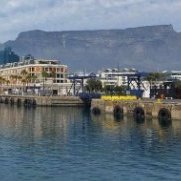Chiang Mai deserted.
-
Recently Browsing 0 members
- No registered users viewing this page.
-
Topics
-
-
Popular Contributors
-
-
Latest posts...
-
24
Scouting Pattaya for a Potential Long-Term Base – Welcome Any Leads
No. We haven't lived in Wongamat for a number of years. -
24
Unathorised transaction
Thanks for the advice and the warning, why could I not simply go to the bank in person and have them set some limits for me ? My original ATM card did not even have a debit card function or an expiry date but I was forced to get the new one when it was eaten by an ATM machine -
75
US banks refuse Trump's business
Socialism is based on a lie. When your worldview is a lie, so is your life. But this problem is solved https://www.foxbusiness.com/politics/trump-moves-protect-american-bank-accounts-from-politically-based-closures Thanks Don for standing up for ordinary Americans -
106
Where are we going to hold the Aseannow 2025 Xmas bash?
Just act normal. I'm Dave etc -
1
Report Thai Woman's "Full Belly" Turns Out to Be Massive Tumor
Looks like a haggis -
29
BILD reveal Gaza hunger photos staged by Hamas/Turkish media
Yes, you love your semantics. Reality not so much.
-
-
Popular in The Pub











Recommended Posts
Create an account or sign in to comment
You need to be a member in order to leave a comment
Create an account
Sign up for a new account in our community. It's easy!
Register a new accountSign in
Already have an account? Sign in here.
Sign In Now